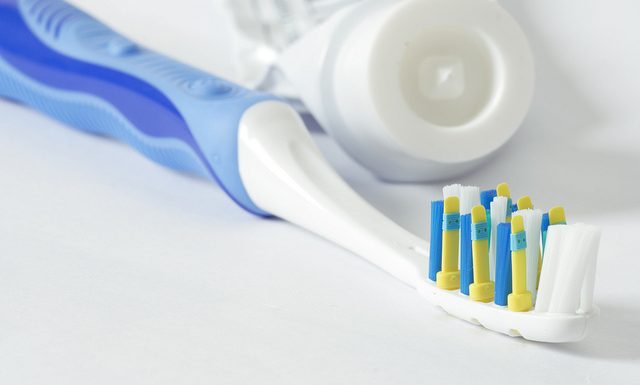
You’re probably well aware of the basic tooth brushing methods, whether it’s the amount of toothpaste you need to use or the motion that’s most affective for getting rid of plaque. You may also be well schooled in the tooth brushing schedule, including how many times a day you need to brush and how long for.
However, you might not be aware of other aspects of tooth brushing that are a little less obvious, such as brushing after a meal and eating certain foods. Here are nine great tips for you to follow if you’re hoping to get maximum effect from tooth brushing.
Don’t Brush Too Hard
Some people think that brushing vigorously enough will ensure plaque is dislodged faster and in its entirety. Certain techniques for brushing such as this can be effective but they can also be harmful. Teeth should always be brushed gently, as you may well be eroding enamel and damaging your gums by brushing too hard.
Use a lighter, circular motion when brushing your teeth instead of long strokes for the best results. You could say that teeth should be treated like any other fragile item when being cleaned.
You are most likely brushing too hard if the bristles bend on your teeth, while you are almost certainly brushing too hard if you notice any blood. Blood can also be a sign of gum disease, so talk to your dentist if this happens often.
Brush At least 30 Minutes after A Meal
You can damage your teeth by brushing too soon after a meal. This is because the pH-level of your mouth is lower than normal and more acidic. This makes brushing potentially abrasive and harmful in the short term.
Don’t Ignore Molars and Sides of Teeth
It’s quite easy to forget about your molars and the inner sides of your teeth when you it I easier to see your front teeth being cleaned. All teeth require equal attention, so try and focus more on your molars as these are the area’s most often in contact with your tongue.
Look After Your Toothbrush
Your tooth brush may look clean after brushing but bacteria will always be present on a brush that isn’t thoroughly cleaned. This can lead to bad breath and cavities. Rinse the brush thoroughly after brushing to ensure the majority of bacteria is removed.
You should also store your brush somewhere other than the side of the sink, as this is where bacteria can grow more easily. Use a cup to store all toothbrushes in from now on.
Floss As Often As You Brush
The bristles of a tooth brush often struggle to make it in between teeth, which is where plaque can develop and subsequently cause tooth decay. This build-up of bacteria and food can be effectively handled by flossing after brushing.
Flossing is often ignored by many who decide to brush twice a day, yet this is an essential part of maintaining oral health.
Spend 2 Minutes Brushing Your Teeth
The recommended amount of time for brushing your teeth is two minutes as this allows for plenty of time to reach ever part of your teeth. It also prevents doing any further damage to your teeth with constant brushing.
You can guarantee brushing for two minutes every time by using a timer when you brush your teeth, or an electric tooth brush which automatically switches off after two minutes. You could even put some music on next to you while brushing to use as a more enjoyable timer!
Start Brushing In Different Places
When you start brushing each morning, instead of focusing on that one specific starting point, brush elsewhere so that other parts of your teeth are given the same amount of care. If you start brushing the same area of your teeth every day, you’re more likely to be less precise when brushing other areas of your teeth.
Eat Natural Teeth Cleaners – Fruit & Veg
Both fruit and vegetables are natural teeth cleaners and should be eaten regularly as part of a healthy, balanced diet. If you don’t have the option to brush your teeth for whatever reason, clean your teeth by eating fruit and vegetables instead.
They contain fibre, which is a natural plaque remover. Get rid of any stray bacteria by rinsing and remember to brush when you can next do so.
Replace Your Brush At Least 2-3 Times a Year
Many people sue the same toothbrush for over a year, to the point where the brush is no longer as effective at removing plaque as it once was. Over time, the bristles on the brush can lose their strength and become flimsy, so much so that they do very little for you in terms of keeping teeth clean.
Make sure you change your toothbrush at least 2-3 times a year and look out for any obvious signs that your toothbrush is no longer doing the best possible job.
Article provided by Precision Dentistry, an aesthetic and implant dental practice based in Glasgow for over 20 years.

Leave a Reply